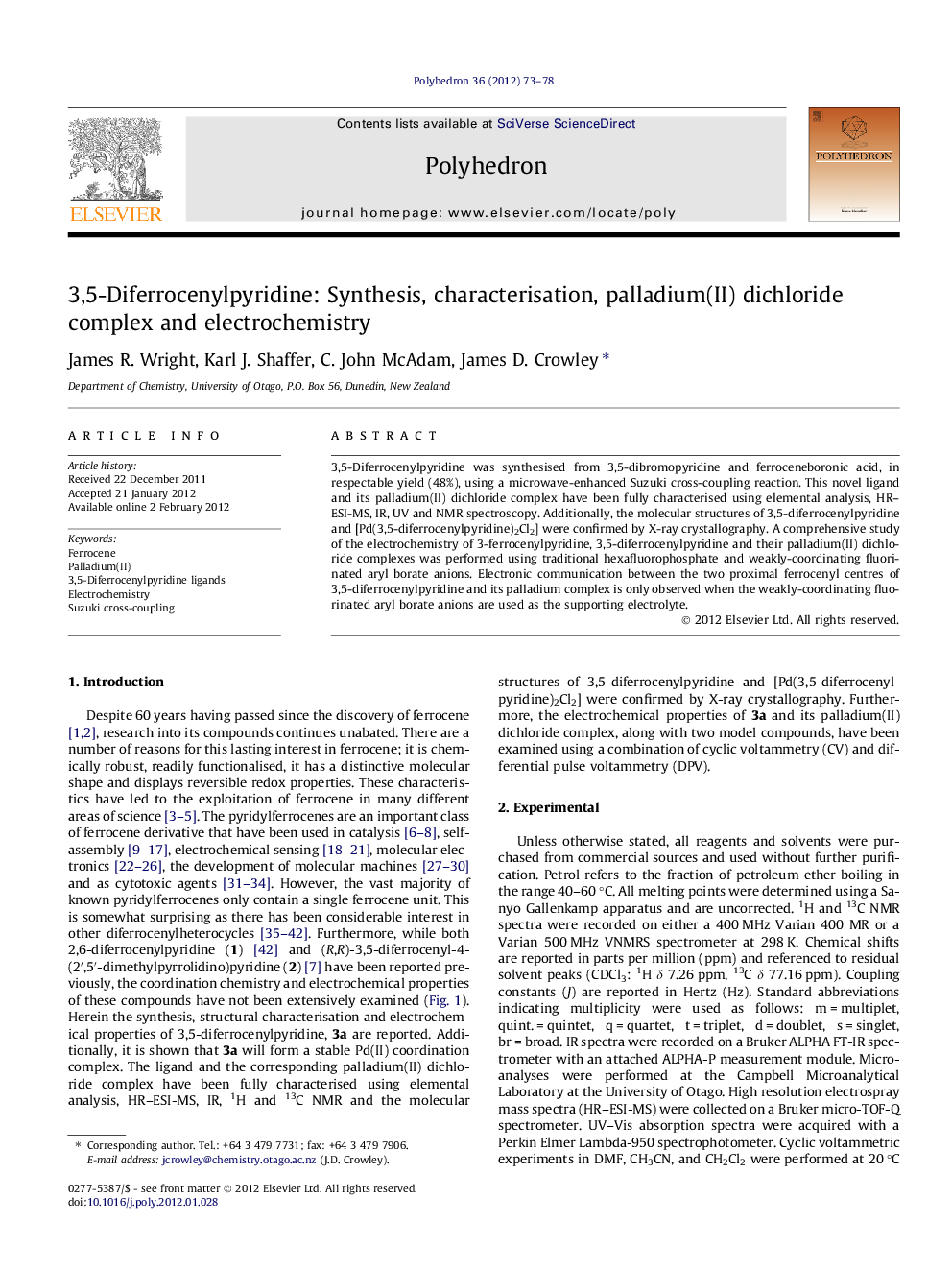| Article ID | Journal | Published Year | Pages | File Type |
|---|---|---|---|---|
| 1337603 | Polyhedron | 2012 | 6 Pages |
3,5-Diferrocenylpyridine was synthesised from 3,5-dibromopyridine and ferroceneboronic acid, in respectable yield (48%), using a microwave-enhanced Suzuki cross-coupling reaction. This novel ligand and its palladium(II) dichloride complex have been fully characterised using elemental analysis, HR–ESI-MS, IR, UV and NMR spectroscopy. Additionally, the molecular structures of 3,5-diferrocenylpyridine and [Pd(3,5-diferrocenylpyridine)2Cl2] were confirmed by X-ray crystallography. A comprehensive study of the electrochemistry of 3-ferrocenylpyridine, 3,5-diferrocenylpyridine and their palladium(II) dichloride complexes was performed using traditional hexafluorophosphate and weakly-coordinating fluorinated aryl borate anions. Electronic communication between the two proximal ferrocenyl centres of 3,5-diferrocenylpyridine and its palladium complex is only observed when the weakly-coordinating fluorinated aryl borate anions are used as the supporting electrolyte.
Graphical abstract3,5-Diferrocenylpyridine and its palladium(II) dichloride complex have been synthesised, characterised and their electrochemical properties studied.Figure optionsDownload full-size imageDownload as PowerPoint slideHighlights► Preparation of a new pyridine ligand, 3,5-diferrocenylpyridine. ► Synthesis of the palladium(II) dichloride complex of 3,5-diferrocenylpyridine. ► Solid state structural parameters of the new ligand and complex. ► Electronic communication between the ferrocenyl groups is observed.
